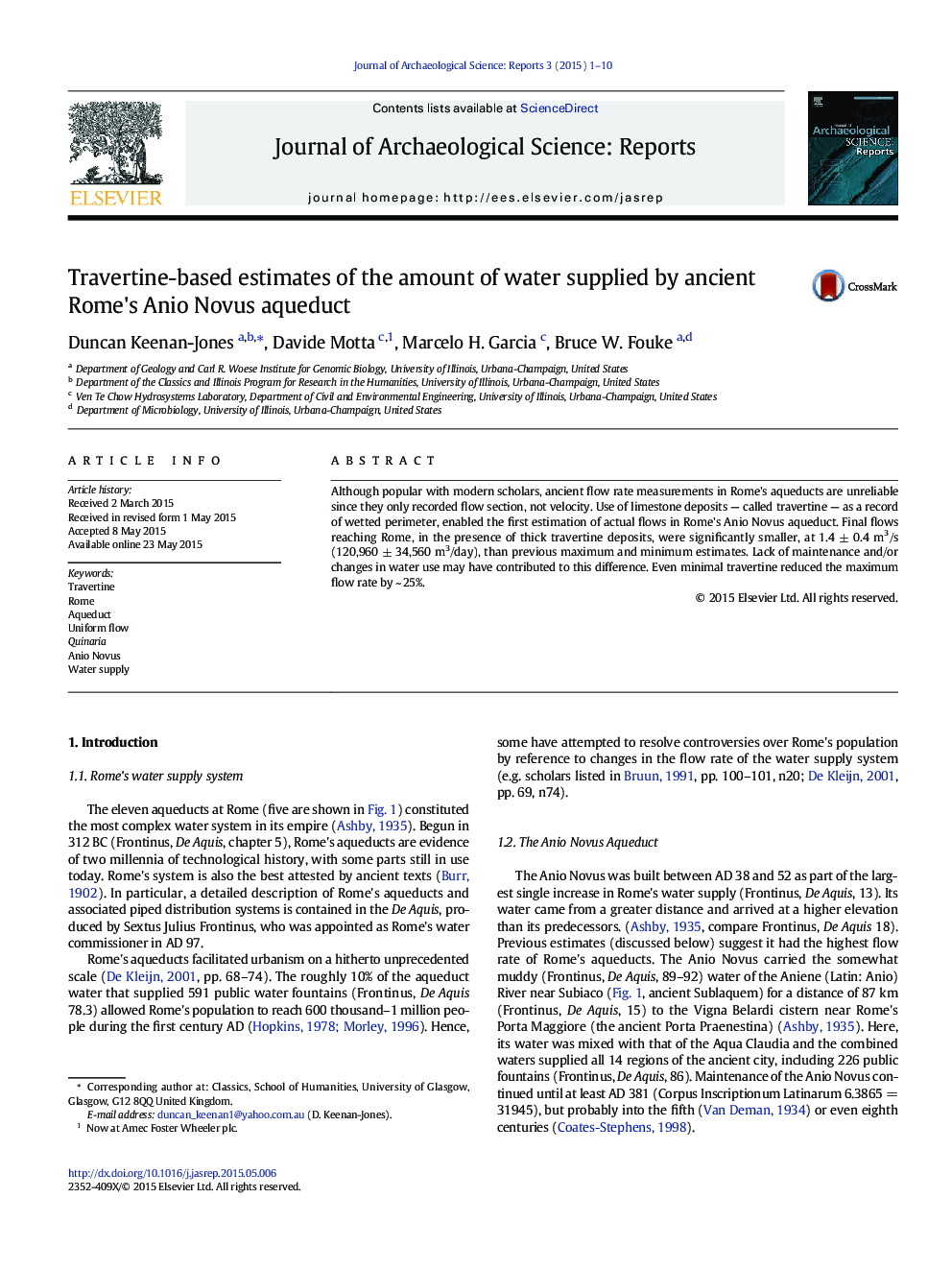| Article ID | Journal | Published Year | Pages | File Type |
|---|---|---|---|---|
| 10499963 | Journal of Archaeological Science: Reports | 2015 | 10 Pages |
Abstract
Although popular with modern scholars, ancient flow rate measurements in Rome's aqueducts are unreliable since they only recorded flow section, not velocity. Use of limestone deposits - called travertine - as a record of wetted perimeter, enabled the first estimation of actual flows in Rome's Anio Novus aqueduct. Final flows reaching Rome, in the presence of thick travertine deposits, were significantly smaller, at 1.4 ± 0.4 m3/s (120,960 ± 34,560 m3/day), than previous maximum and minimum estimates. Lack of maintenance and/or changes in water use may have contributed to this difference. Even minimal travertine reduced the maximum flow rate by ~ 25%.
Related Topics
Social Sciences and Humanities
Arts and Humanities
History
Authors
Duncan Keenan-Jones, Davide Motta, Marcelo H. Garcia, Bruce W. Fouke,
